Translated by Lorrie Jayne
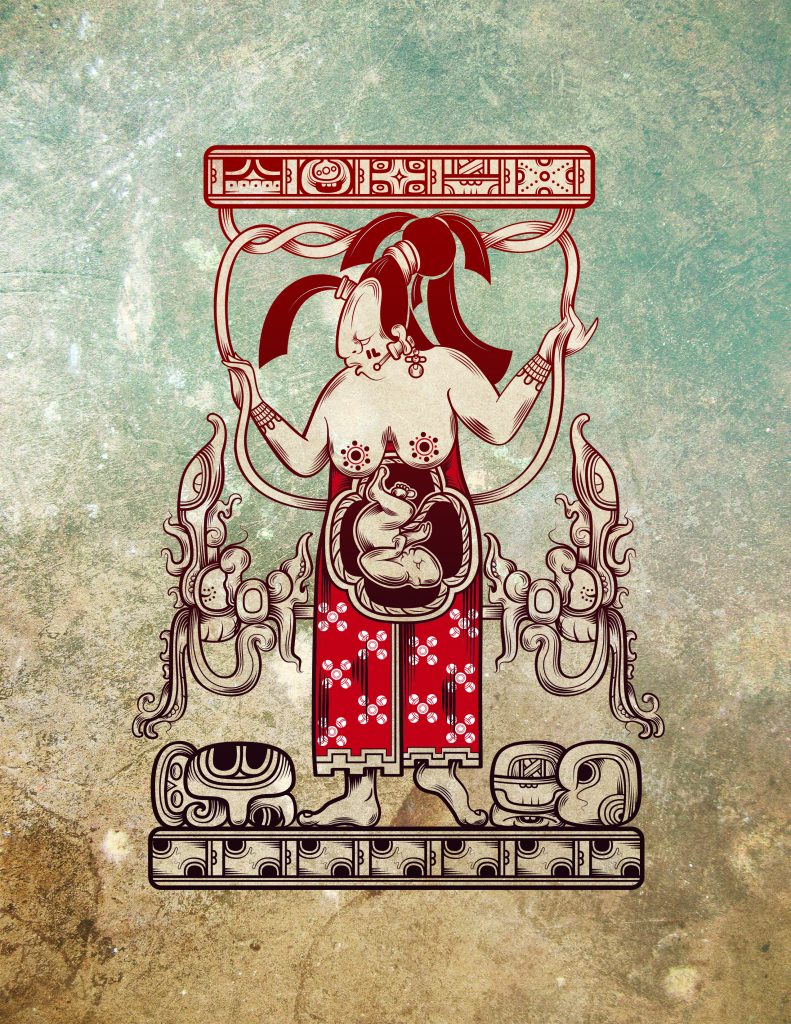
Walter Paz Joj is an ajtz’ib (a Maya Kaqchikel scribe), a designer, musician and community leader in Pan Ajache’l (Sololá, Iximulew/Guatemala). Like many young people in Iximulew, Paz Joj is revitalizing the tz’ib’ (in its form of gliphs/epigraphs) with which the ancients painted the codices, sculpted the rocks, and registered the cycles of the heavenly bodies and of the peoples. In 1997, the Q’anjob’al Mayan writer Gaspar Pedro González explained that tz’ib’ “covers the distinct modes of thought through the use of signs, symbols, colors, weaves, and lines.” Since that time, the force of tz’ib has multiplied, bringing into question the patriarchy of alphabetic writing. Today, Paz Jojs’ tz’ib serves as a bridge between the amatle-paper and the electronic screen: the ukux (heart) of his illustrations challenges the understanding of time as linear. (Juan G. Sánchez Martínez)
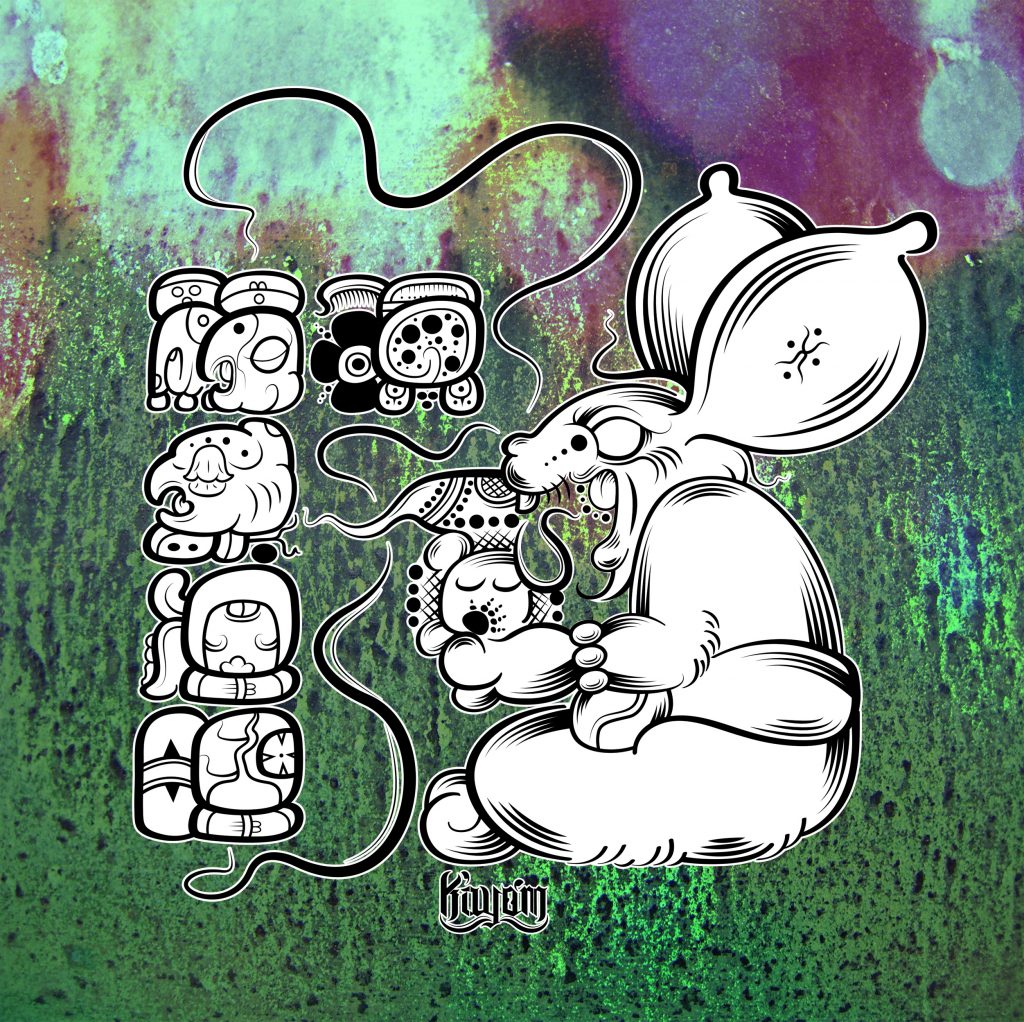
In the words of the artist:
My work is based on and inspired by the form of ancient Maya writing (tz’ib). It seeks to represent, in my own way and my own style, ideas, feelings, and emotions as a Maya kaqchikel. I come from Pan Ajache’l, Sololá, within Lake, Atitlán, Guatemala. I am dedicated to researching and sharing the ancient Maya writing through its function and use, as well as in its artistic application, so that it might serve as inspiration for all Maya people who are interested in contributing to the revitalization and use of Mayan hieroglyphic writing from their own territories, ways of thinking, and languages. I have also dedicated space to music through the re-creation of ceramic instruments, invoking forms of expression through sound that were created by the ancestors.
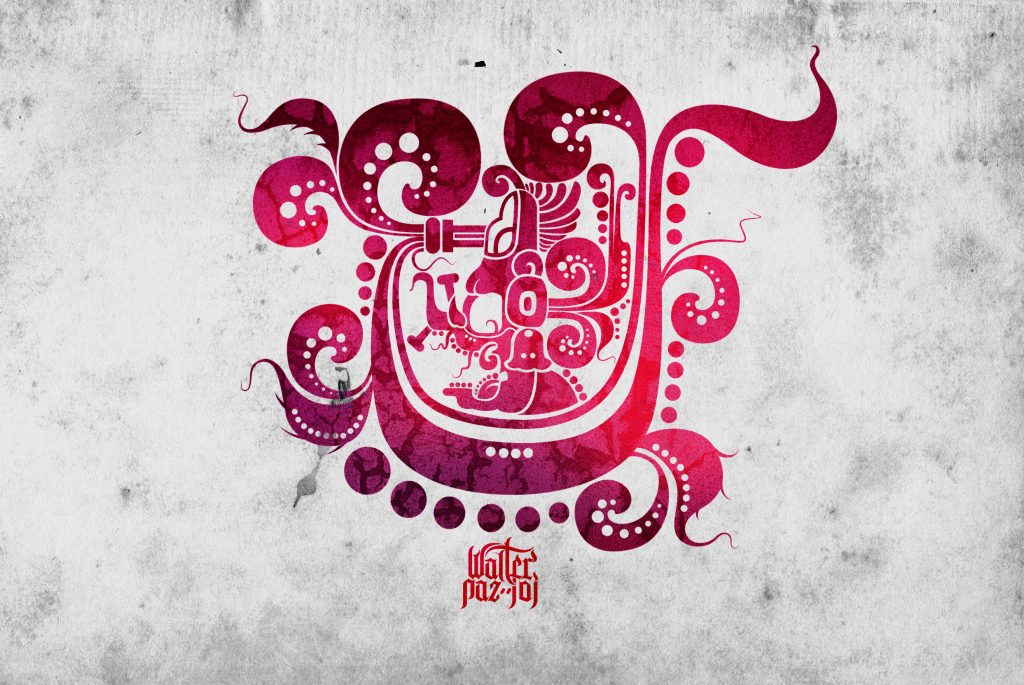
The themes in my illustrations are varied and are always dedicated to an element of nature, a person, or a way of thinking- philosophy, language, territory, among other elements- all based in my own practice of maya thought and life.
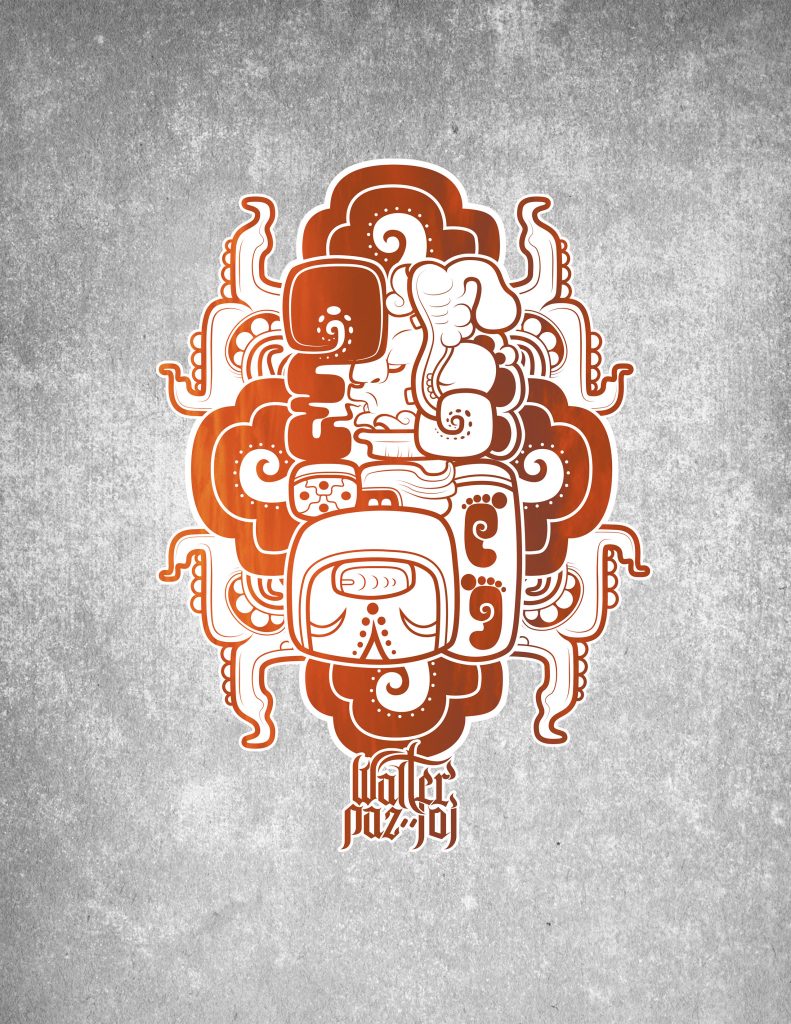
In my consideration, every illustration/drawing represented with tz’ib’ possesses a heart, an essence, that allows it to take on a life of its own. The illustration/drawing is not merely observed as a decorative thing, since its function, aside from being a form of communication, also possesses a reason for being and existing that reminds us and allows a link that unites us, the present day Maya with our ancestors, the Maya of the past, leaving no doubt that we possess an ancient and valuable past, and that despite the intent of the extermination, we still continue living and contributing, from our spaces, to life, to life’s protection, to life’s happiness.
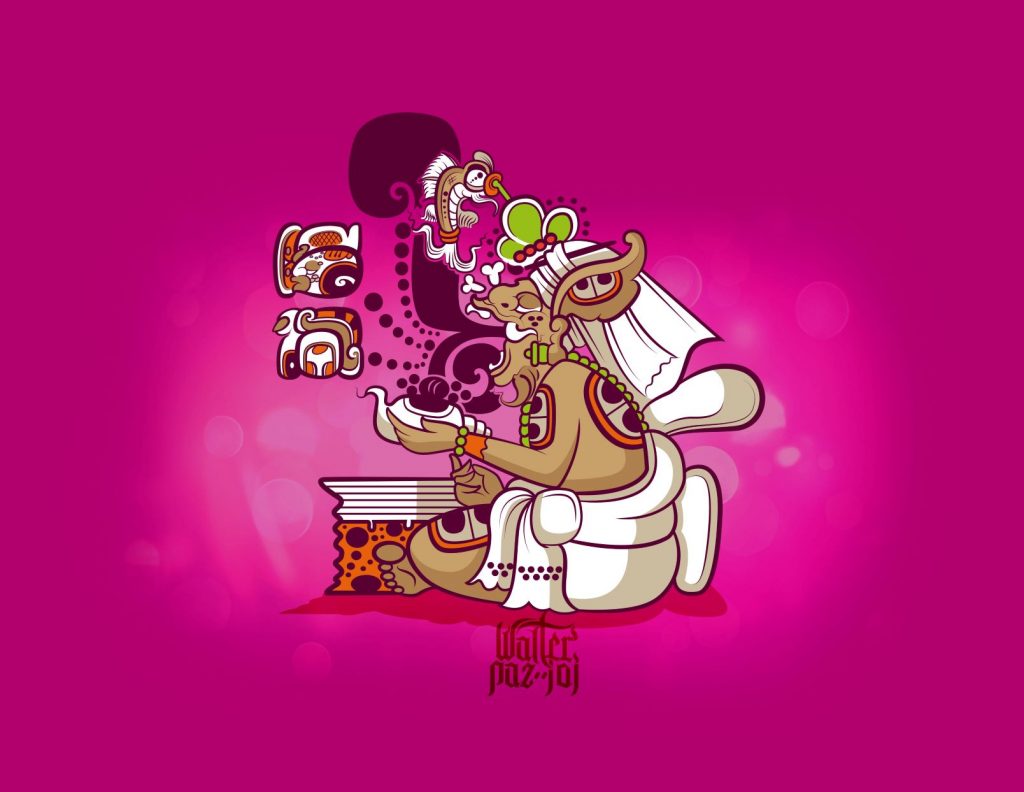
As an ajtz’ib’ (Maya scribe) I do not consider Maya writing to separate itself from the spiritual, the material, from living, language, music, art, weaving, or from philosophy, all of the expressions that sustain the cultural legacy that brings us into being, existing, and expressing ourselves from within ourselves.
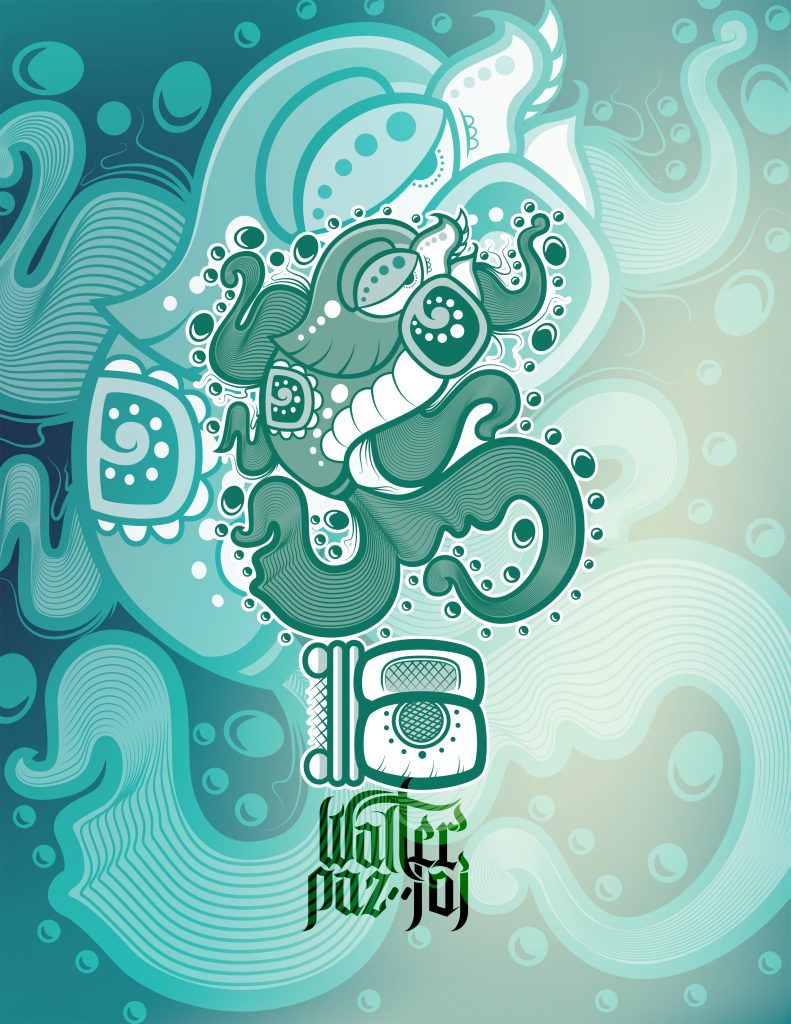
The use and revitalization of the written Maya hieroglyphs (tz’ib’) is also an act of protest and resistance that assures that we do not forget our history, our legacy, and that we express that we are living Maya people with much to contribute to the collective good.
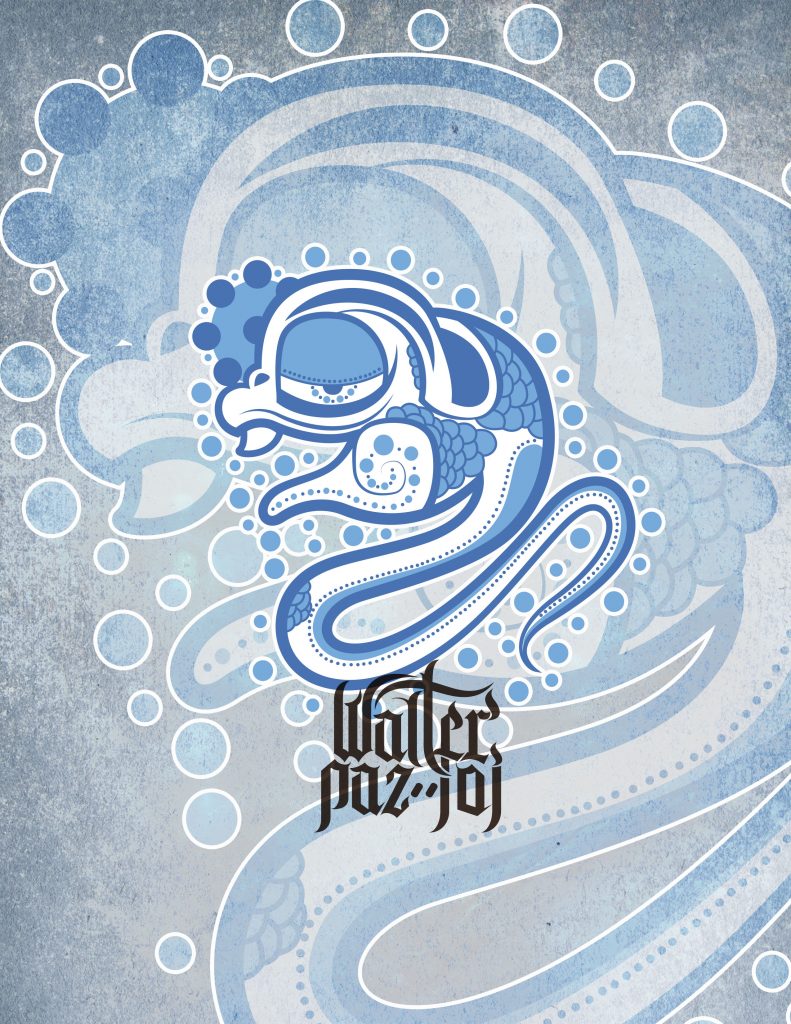
We are contemporary Maya who paint/draw with the heart and who speak out through the ancient signs and forms. As our ancestors did, we paint/draw in order to tell our story.
About the translator

Lorrie Jayne is a poet, translator, writer, and educator from the desert border region of the United States. She teaches Spanish and Portuguese in the Department of Languages and Literatures at the University of North Carolina in Asheville, NC. Lorrie’s interests include poetry, plants and healing, memoir, Amazonian literature, and intercultural communication. She lives with her husband and daughters in the Blue Ridge mountains of North Carolina.
For more about the works of Walter Paz Joj

For more about contemporary Tz’ib’
Indigenous Cosmolectics. Kab’awil and the Making of Maya and Zapotec Literatures, by Gloria E. Chacón.
Unwriting Maya Literature. T’siib as Recorded Knowledge, by Paul M. Worley and Rita M. Palacios.

One Reply to “Walter Paz Joj. Illustrations with Tz’ib’ and Heart.”
Comments are closed.